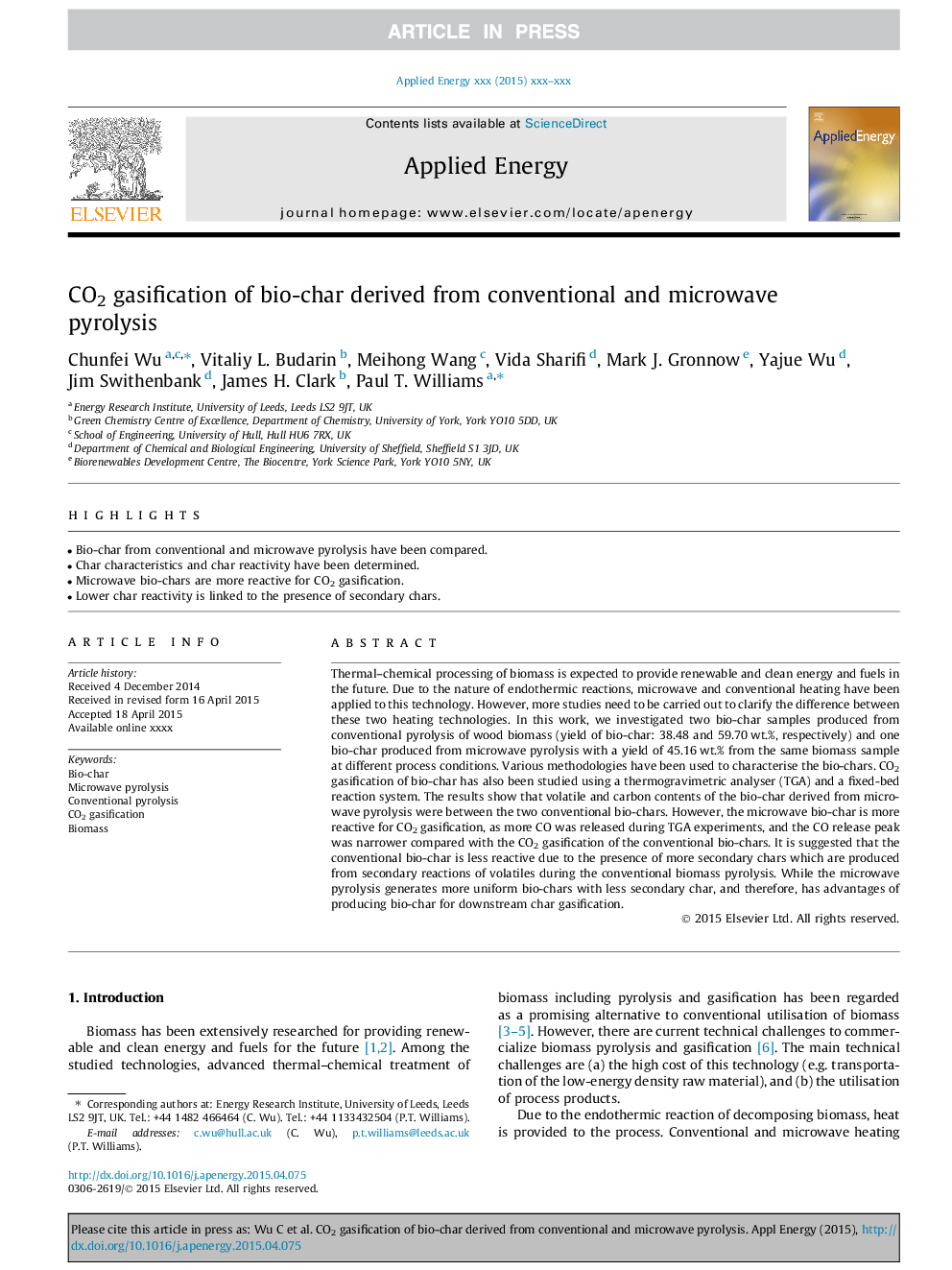| Article ID | Journal | Published Year | Pages | File Type |
|---|---|---|---|---|
| 6686002 | Applied Energy | 2015 | 7 Pages |
Abstract
Thermal-chemical processing of biomass is expected to provide renewable and clean energy and fuels in the future. Due to the nature of endothermic reactions, microwave and conventional heating have been applied to this technology. However, more studies need to be carried out to clarify the difference between these two heating technologies. In this work, we investigated two bio-char samples produced from conventional pyrolysis of wood biomass (yield of bio-char: 38.48 and 59.70Â wt.%, respectively) and one bio-char produced from microwave pyrolysis with a yield of 45.16Â wt.% from the same biomass sample at different process conditions. Various methodologies have been used to characterise the bio-chars. CO2 gasification of bio-char has also been studied using a thermogravimetric analyser (TGA) and a fixed-bed reaction system. The results show that volatile and carbon contents of the bio-char derived from microwave pyrolysis were between the two conventional bio-chars. However, the microwave bio-char is more reactive for CO2 gasification, as more CO was released during TGA experiments, and the CO release peak was narrower compared with the CO2 gasification of the conventional bio-chars. It is suggested that the conventional bio-char is less reactive due to the presence of more secondary chars which are produced from secondary reactions of volatiles during the conventional biomass pyrolysis. While the microwave pyrolysis generates more uniform bio-chars with less secondary char, and therefore, has advantages of producing bio-char for downstream char gasification.
Related Topics
Physical Sciences and Engineering
Energy
Energy Engineering and Power Technology
Authors
Chunfei Wu, Vitaliy L. Budarin, Meihong Wang, Vida Sharifi, Mark J. Gronnow, Yajue Wu, Jim Swithenbank, James H. Clark, Paul T. Williams,
